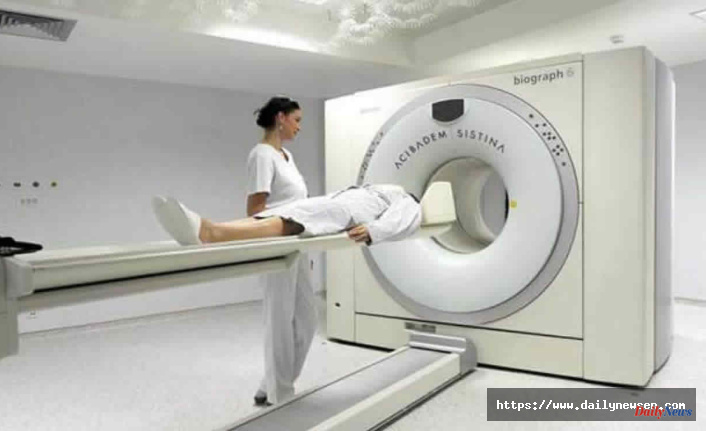In modern medicine, advancements in technology have revolutionized diagnostic procedures. One such breakthrough is the utilization of low-dose CT lung cancer screening. This cutting-edge technique has not only transformed the early detection of lung cancer but has also paved the way for comprehensive full-body CT scans. This article dives deep into the world of full-body CT scans, shedding light on their significance, applications, and benefits.
The Evolution of Medical Imaging
The field of medical imaging has witnessed remarkable progress since the serendipitous discovery of X-rays by Wilhelm Conrad Roentgen in 1895. Initially, X-rays were limited to providing two-dimensional images of the body's internal structures. While revolutionary at the time, they had their limitations. It wasn't until the 1970s that computed tomography (CT) scans were introduced, revolutionizing how we visualize the human body.
CT scans, also known as CAT scans, utilize a combination of X-rays and advanced computer algorithms to generate detailed cross-sectional images of the body. This innovative approach marked a significant leap forward in diagnostic capabilities. Unlike traditional X-rays, which provide a flat image, CT scans offer three-dimensional views, allowing healthcare professionals to explore the body's intricate structures with unparalleled clarity and precision.
Understanding Full-Body CT Scans
Full-body CT scans, often called whole-body CT scans or WBCT, are comprehensive imaging procedures that capture detailed cross-sectional images of a patient's entire body. These scans use a rotating X-ray machine that emits a series of X-ray beams from different angles. A computer then processes the resulting data to create detailed cross-sectional images, or "slices," of the body.
Their ability to provide a holistic view of a patient's anatomy sets full-body CT scans apart. Unlike traditional X-rays, which focus on specific areas, these scans encompass everything from head to toe. This means that healthcare providers can examine multiple organ systems and structures in a single scan, making them an invaluable tool for diagnosis and evaluation.
Applications of Full-Body CT Scans
Early Cancer Detection
Low-dose CT lung cancer screening is a groundbreaking application of full-body CT scans. Lung cancer is a deadly disease, often diagnosed at advanced stages when treatment options are limited. It is designed to detect lung cancer in its earliest and most treatable stages, especially in high-risk individuals like smokers.
During this procedure, a minimal dose of radiation is used to create highly detailed images of the lungs. These images can reveal small nodules or tumors that may indicate lung cancer. Early detection through this method significantly improves the chances of successful treatment and survival.
Trauma Assessment
Full-body CT scans are indispensable in cases of trauma and accidents. When a patient arrives at the emergency room with injuries from a car crash, fall, or any other traumatic event, time is of the essence. Full-body CT scans allow healthcare providers to swiftly assess the extent of injuries, including fractures, internal bleeding, and damage to vital organs.
By obtaining a comprehensive view of the patient's injuries, medical professionals can make rapid and informed decisions about treatment, ensuring that critical issues are addressed promptly.
Cardiovascular Evaluation
Cardiovascular diseases, including coronary artery disease and aneurysms, are the leading causes of death worldwide. Full-body CT scans play a vital role in evaluating cardiovascular health. These scans can detect the presence of plaque buildup in the arteries, assess the condition of the heart, and identify aneurysms that may pose a risk of rupture.
Early identification of cardiovascular issues through full-body CT scans enables timely intervention and lifestyle modifications, reducing the risk of heart attacks and strokes.
Screening for Abdominal Conditions
Full-body CT scans are also used to screen for various abdominal conditions. This includes detecting kidney stones, evaluating liver health, and diagnosing gastrointestinal disorders. The detailed images these scans provide allow for accurate and precise diagnosis of the abdominal region.
Bone and Joint Assessment
Athletes and individuals with musculoskeletal complaints benefit from full-body CT scans to assess bone and joint conditions. These scans can reveal fractures, arthritis, and soft tissue injuries that may not be easily visible through other imaging methods.
By pinpointing the exact location and extent of injuries, healthcare providers can tailor treatment plans to expedite recovery and minimize long-term complications.
Benefits of Full-Body CT Scans
Comprehensive Evaluation
The ability to assess multiple organ systems and structures in a single scan makes full-body CT scans invaluable for comprehensive health evaluations. This holistic approach ensures that no potential health issue goes unnoticed.
Time-Efficiency
Time is often critical in healthcare, especially in emergencies. Full-body CT scans are incredibly time-efficient, providing rapid insights into a patient's condition. This efficiency can be a lifesaver, particularly when swift action is required.
Early Diagnosis
Early detection is a cornerstone of successful treatment, particularly in cancer-related diseases. Full-body CT scans empower healthcare providers to identify medical conditions at their earliest stages, increasing the likelihood of positive outcomes.
Non-Invasive
Unlike invasive diagnostic procedures requiring surgery or other interventions, full-body CT scans are entirely non-invasive. Patients undergo the procedure without incisions or anesthesia, reducing the associated risks and recovery time.
Data for Treatment Planning
The detailed and precise images produced by full-body CT scans provide healthcare providers with invaluable data for treatment planning. Whether it's surgery, chemotherapy, or other interventions, clearly understanding the patient's anatomy is essential for devising effective treatment strategies.
Concerns and Safety Measures
Radiation Exposure
One of the primary concerns associated with full-body CT scans is radiation exposure. Ionizing radiation is used in the scanning process, which, over time or with repeated scans, can pose a slight risk of cancer. However, it's crucial to emphasize that the benefits of these scans, especially in early cancer detection, typically outweigh the potential risks.
To mitigate radiation exposure, low-dose CT for cancer screening uses minimal radiation doses while still delivering detailed images. Healthcare providers carefully weigh the risks and benefits when recommending full-body CT scans, ensuring they are medically necessary.
Cost
The cost of full-body CT scans can be a consideration for many patients. These scans are often more expensive than other imaging methods, and insurance coverage may vary. Patients should discuss the cost and potential insurance coverage with their healthcare providers to make informed decisions about undergoing this procedure.
Conclusion
Full-body CT scans have undoubtedly transformed the landscape of modern medicine. From their inception as a tool for comprehensive evaluation to their critical role in early cancer detection through low-dose cancer screening, these scans have become indispensable in healthcare. They offer a holistic view of a patient's health, save valuable time in emergencies, and enhance the prospects of early diagnosis and effective treatment.
However, it's essential to acknowledge the concerns associated with radiation exposure and cost. Healthcare providers must carefully assess the necessity of full-body CT scans and discuss these concerns with patients to ensure their safety and well-being.
As technology advances, full-body CT scans remain at the forefront of medical imaging, reshaping how we diagnose and treat a wide range of medical conditions. Embracing these innovations ensures patients receive the best possible care, ultimately improving their quality of life and health outcomes.












